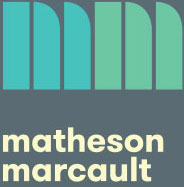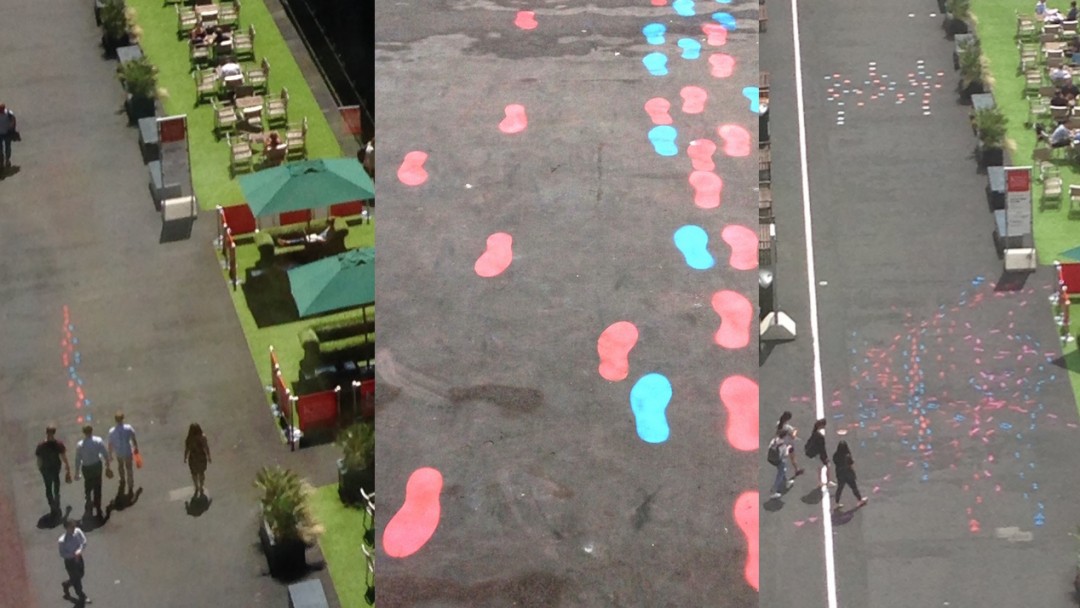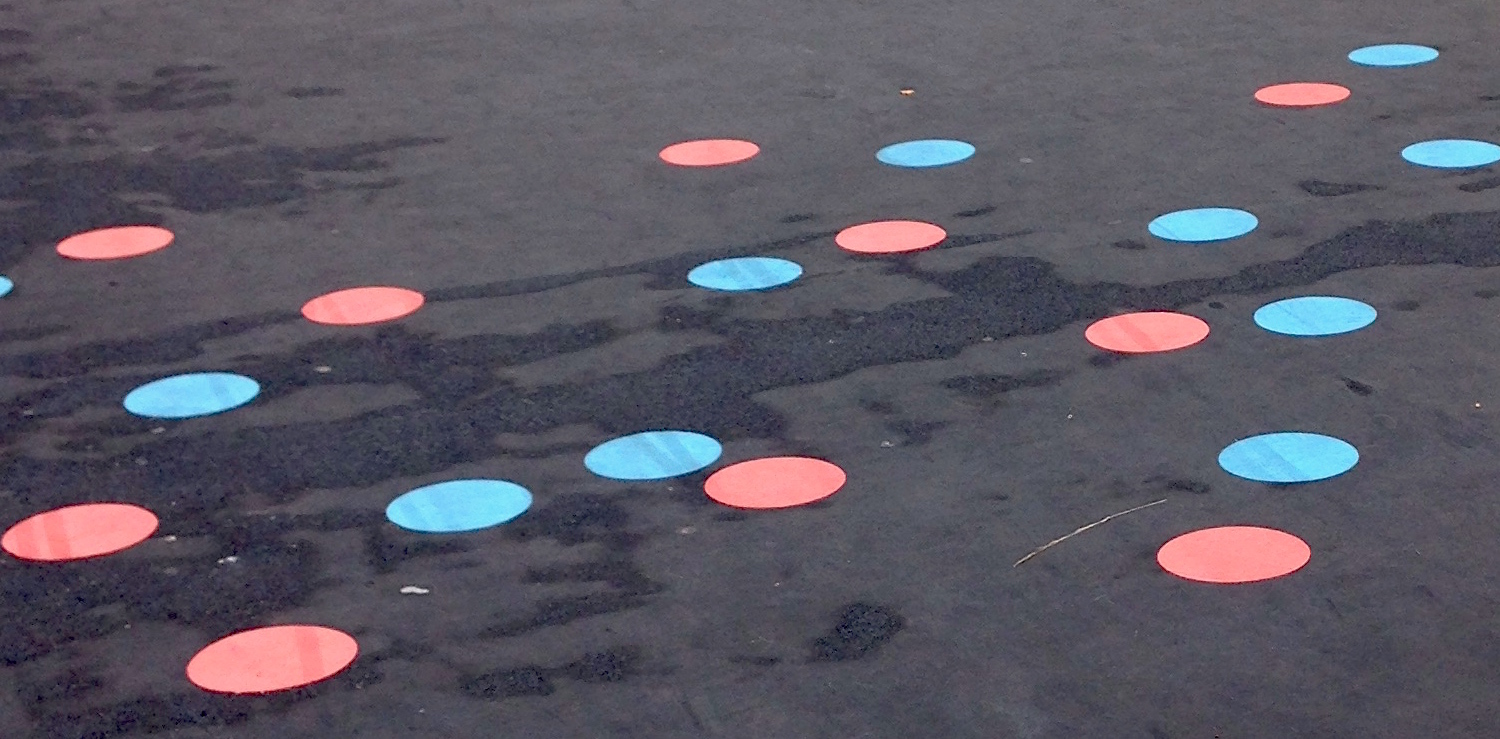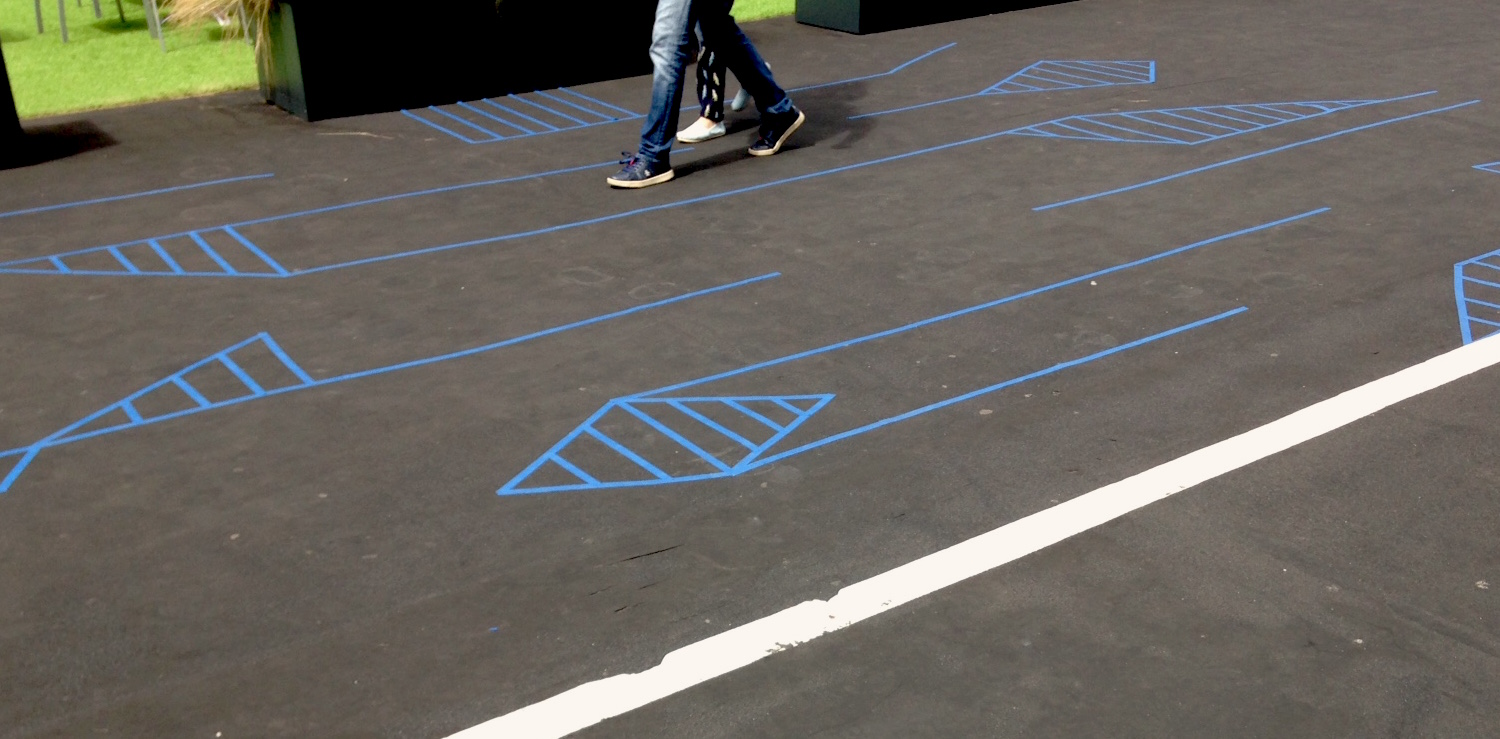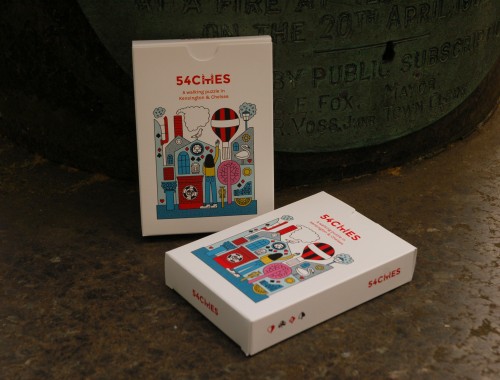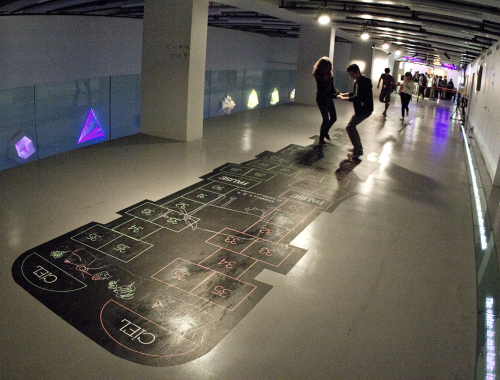We’ve now spent two weeks putting different things in the Quad at King’s College London – from hopscotch courses to plastic telescopes to big cardboard frames – as part of our research into public play for the upcoming Arts & Humanities Festival.
Today is our last day of observations before we start sitting down and sifting through everything we’ve discovered. And there’s a lot to go through.
For example, look at the different sets of footprint trails above. We started off with one very simple trail, then got progressively more complicated – and each time the trail got more complicated, we found we had many more players. Barely anyone tried out the first version, maybe two people in five hundred – but dozens of people paced along one of the final routes.
We’ve found that if we put something new in the Quad, somewhere between 20% and 40% of the people who walk through will acknowledge it – usually just by turning their heads to have a look. Unexpectedly, staff members who walk through daily are more likely to look, and tourists least likely of all – the thing that’s drawing the attention isn’t the object itself, it’s the change. Something that’s been there a few days gets many fewer people peering at it.
And who’ll actually play with the new thing they’re turning to look at? Well, there’s a whole lot of variation depending on what that thing is – and what our potential player is doing. There are a lot of different ways to engage with the sort of playful public art we’ve been trying out, for example:
- Looking while you pass
- Stopping to have a proper look
- Taking photos of the prototype
- Taking photos of yourself or your friends in front of the prototype
- Taking photos of yourself or your friends while you play
- Passing time – pacing around on footsteps or dots while waiting for someone or on a phonecall, halfway between “play” and “dawdling”
- Taking part inconspicuously – following a trail for a few steps, following a route but not stepping on the footprints, walking along a hopscotch course without hopping
- Taking part conspicuously – following a whole route, hopping a few squares, peering through the telescope
- Playing deliberately – stopping what you’re doing otherwise in order to play
We found that different installations have very different take-up from all these different types of players. For example, when we put down hopscotch grids (above), people engaged very differently from when we put down subtler patterns (below).
We’ve got two weeks of observations to sort through properly, and we’re continuing to interview different designers about their work, so there’s a way to go yet! Over the next few weeks we’ll keep posting interviews with interesting artists, designers and architects sharing their own discoveries about public play. We’ll also get on with thinking about the different prototypes we’ve tested, and developing some of them further to install in the Quad for the Arts & Humanities Festival this October.
